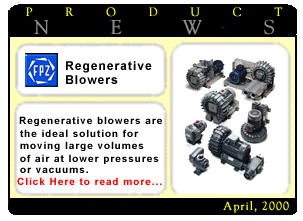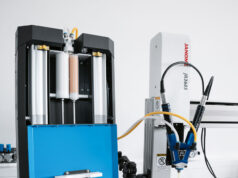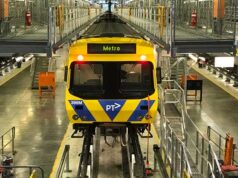Regenerative blowers are the ideal solution for moving large volumes of air at lower pressures or vacuums. Unlike positive displacement compressors and vacuum pumps, regenerative blowers “regenerate” air molecules through a non-positive displacement method to create vacuum or pressure. In the world of air handling equipment, regenerative blowers are probably the least understood of today’s technologies, but when system parameters fall within the range of a regenerative blower, it can be the most cost effective method for producing pressure or vacuum.
Regenerative blowers are also called side channel blowers or ring compressors, terms that refer more to their physical construction. The more common name regenerative comes from their basic operating principle, as discussed below.
Regenerative blowers in plant installations are typically in a direct drive design, versus electric motor / gas engine belt drive configurations. (refer photo depicting these 2 designs). The impeller in the direct drive (sometimes called monobloc) construction is mounted directly on the electric motor shaft and rotates at the motor’s nominal speed, typically 2900 or 3500 rpm. The impeller consists of numerous radial blades on the circumference of the impeller. The number, size and angle of these blades contribute to the pneumatic performance (flow vs. pressure / vacuum) characteristics of each blower. Some makes of blowers have somewhat “flat” curves (Y axis =pressure / vacuum, X axis = scfm), while other makes have quite steep performance curves. The impeller spins within a housing that consists of an inboard and outboard “channel” (hence the term side channel blower). As the impeller passes the inlet port, air is drawn in. As the impeller rotates, air is captured between each blade on the impeller and is pushed both outward and forward into the channels. The air then returns to the base of the blade. This process is repeated over and over as the impeller spins. It is this regeneration that gives the blower its pressure / vacuum capabilities. In essence, a regenerative blower operates like a staged reciprocal compressor and while each blade to blade regeneration “stage” results in only slight pressure increases, the sum total, from air entry to outlet can yield, in some makes continuous operating pressures up to 9 psig or vacuum to 14″ hg with flows in the 200 to 250 scfm range at these points.
Most blowers are single stage as air molecules travel around the blower housing one time and then are exhausted. In addition to single stage units, some blower manufacturers offer two staged blowers. Two stage regenerative blowers are capable of providing nearly twice the pressure or vacuum of single stage units. Two staged blowers operate much like single stage units as the impeller strikes air molecules over and over to create vacuum and pressure. In a staged blower air molecules will make one revolution around the front side of the impeller. Instead of being exhausted after the first revolution (like single stage units), the air flow is channeled to the back side of the impeller through internal porting. Air molecules will then make another revolution around the back side of the impeller thus doubling the number of times that the impeller blades strike the air molecules. After a second revolution around the blower housing, the air is exhausted. Higher pressures and vacuums are able to be generated with two stage blowers since the impeller blades strike or “regenerate” air molecules through two revolutions instead of one.
For the engineer, one of the biggest benefits of a regenerative blower is, by virtue of its fundamental design, its lack of maintenance / monitoring requirements. The impeller is the only moving part; it does not come in contact with the housing channels and is, therefore, “wear-free”. Self-lubricated bearings are the only wearing parts. Regenerative blowers are oilless and have no complicated intake / exhaust valving. Furthermore, most blower makes can be mounted in any plane and with dynamically balanced impellers generate little vibration. As a “non-positive displacement” compressor / vacuum pump, discharge air, besides being clean, is pulsation-free, an important consideration particularly for plant controls or instrumentation use.
The majority of blower failures are due to improper installation and / or operation. Because there are so few moving parts, there is not much that can go wrong. Regenerative blowers have close internal tolerances between the impeller and housing, and it is important to not allow foreign material to enter the blower. Debris that is ingested by a blower can cause a catastrophic failure as it may become wedged between the impeller and housing which will cause the blower to lock up. A filter should always be purchased with a blower to prevent debris from entering the blower. A 10 micron filter is usually adequate to prevent such a failure from happening. Over pressurization can also cause a catastrophic failure. Some blowers can be “dead headed” (zero airflow through the blower) while other models (usually ¾ HP models and above) must have air passing through the blower to cool it. If air does not pass through the blower, heat will build up causing the impeller to expand at a faster rate than the blower housing. Eventually the impeller will lock up with the housing causing the blower to fail. A relief valve (either vacuum or pressure) will prevent over pressurization and will allow air to pass through the blower. Most blower manufacturers offer filters and relief valves as accessories for their blowers.
Regenerative blowers are used in a broad range of applications. These include: pneumatic conveying, sewage aeration, vacuum lifting, vacuum packaging, packaging equipment, printing presses, aquaculture/pond aeration, spas, dryers, dust / smoke removal, industrial vacuum systems, soil vapor extraction, and chip removal for engraving equipment. Anywhere high airflow and low vacuum / pressure is required, regenerative blowers are an ideal solution as a properly installed blower will provide years of service free operation.
This article was provided by FPZ Inc.









